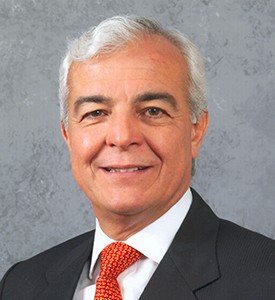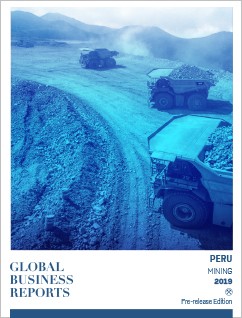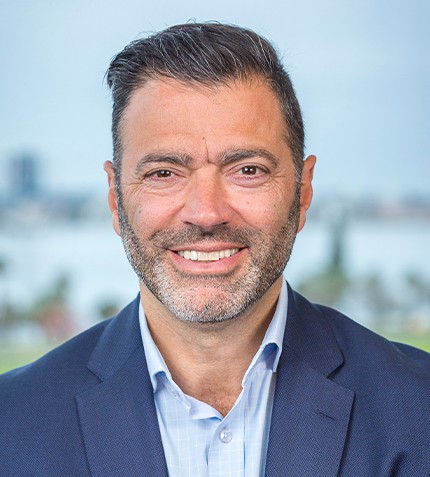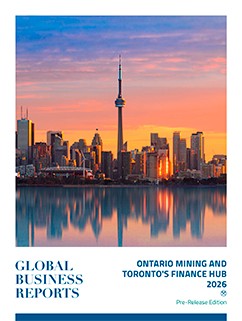
“We have to define what kind of country we want and do a SWOT analysis to enhance where we have the greatest strengths. We believe that our mining industry is one of our strengths: it represents 11% of the GDP, 60% of exports and 20% of total taxes in the country”
RELATED PUBLICATION
ARTICLES FROM THIS PUBLICATION
Carlos Gálvez
PRESIDENT OF THE ORGANIZING COMMITTEE, PERUMIN
How will you approach the 34th PERUMIN Convention, which will be held in September of 2019?
Traditionally, PERUMIN has been uniquely focused as a convention of miners for miners, initially held to deal with technical issues and thereafter with social and environmental concerns. For this year’s convention we concluded that, if we want to get up to date with development in the 21st century, we have to be engaged with the knowledge industry and that is why we are now emphasizing science, innovation, technology and education. We have been working on a series of activities on the road to PERUMIN in order to resolve concrete challenges; these include four 'hackathons' and two events centered on information technology, communication, automation and robotics, with the participation of some 40 universities. The idea is to focus on the multiple challenges that the mining industry faces, because many of these innovations can be transferred to other industries.
What concrete changes are you going to introduce at the Convention?
We have decided to have students take a more active role in the event, and we are having a select group of students that will work together with different exhibiting companies, rather than having hostesses at the stands. What want to attract young people, and we will also have a virtual mine that will have a playful component so that children can enter and take part in the exhibit. Children are taught from the moment they learn to read that 'mines contaminate'. We want them to see personally how it works and for them to have their own appreciation of the process.
Finally, in previous conventions there were up to seven simultaneous events taking place, which greatly complicated the logistics, and also created a multiplicity of conferences covering the same topic. We have reduced this.
In what other productive activities can mining have an influence?
Blame is always put on the industry for only offering 200,000 jobs related directly to the mining industry, but when we see mining take place in areas with high poverty rates, we see an opportunity. For example, the potato, which is native to Peru, is produced at high-Andean levels in an artisanal capacity. No one has thought of the native potato as a "super-food" that can have access to specialty markets with high margins. This is where mining can play a role.
Water is sometimes a source of conflict between industry and communities. What is the position of the sector on this matter?
Of the total water resource available in Peru, 1% is used; and of that 1%, mining uses 1%. That is to say, mining uses 0.01% of the total water resources available. The industry has set great restrictions in the capturing of water and great restrictions in water shedding. The solution lies in capturing water once and recirculating it in the operation constantly, like in a swimming pool. For this reason, mines today recycle between 90% and 98% of water.
What mining potential remains to be developed in Peru?
People keep repeating that the industry is exploiting an exhaustible resource, but they do not realize that we are just scratching the surface. For example, the Chuquicamata mine in Chile, one of the largest in the world with an open pit of 1.3 km in depth, has been in operation for 50 years and is now becoming an underground mine with the help of innovation and technology. In this manner, production can be maintained for another 50 years.
In Peru, we have yet to develop the entire southern corridor, as well as the entire northern belt, with Michiquillay, Galeno, Conga, the sulfides of Yanacocha, La Granja, Tantahuatay and Gold Fields. If we add both the north and the south, we have the possibility of competing with Chile in copper production. In addition, there is international private capital that is willing to invest in copper smelters in Peru, especially now that some smelters are being closed in Chile. Finally, there is an opportunity to develop mining clusters (in PERUMIN we will have an exhibitor from Australia dealing with this particular issue) with a shared infrastructure: a railroad, the same tailings dam, etc. In order to achieve this development, we have to look at this as one united country: not just focus on isolated projects, but focus on the complete picture with an optimized plan, making the most of the technologies at hand. This will achieve the highest economic returns for the State and investors, as well as society.
What promotional role can the State have?
We need the President to assume a leadership role with a vision for the country and a strategy to reach it, taking advantage of his close ties to subnational government bodies, thereby managing to convince the population. We have to define what kind of country we want and do a SWOT analysis to enhance where we have the greatest strengths. We believe that our mining industry is one of our strengths: it represents 11% of the GDP, 60% of exports and 20% of total taxes in the country. In the challenges we have there is a great opportunity to jump into the 21st century as well as the knowledge industry, and take advantage of the extractive industry as an opportunity to develop it.











